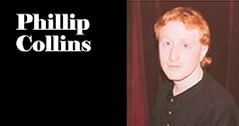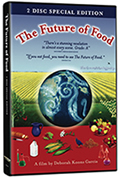PART 1
by Phillip D. Collins
July 18, 2009
NewsWithViews.com
Scientific totalitarianism is certainly not a new topic in the halls of political science and history. Given its bloody legacy of democide (i.e., state-sanctioned genocide, mass murder, and politicide) and its prolific spread throughout the world, scientific totalitarianism remains a preoccupying sociopolitical phenomenon of the 20th century. Yet, few researchers have examined the epistemological foundations of scientific totalitarianism. In turn, an understanding of scientific totalitarianism's epistemological roots elucidates an occult conception of science, which edified the sundry Weltanschauungs of sociopolitical Utopians (e.g., socialists of either the communist or fascist ilk). In light of this core epistemological commonality, all forms of sociopolitical Utopianism could be considered the manifestations of a trans-historical occult counterculture movement.
To understand the occult conception of science, one must first establish a working definition for traditional science. The word "science" is derived from the Latin word scientia, which means "knowing" or "knowledge." Thus, there is an epistemological dimension to science. After all, epistemology is etymologically derived from the Greek word episteme, which also means "knowing" or "knowledge." In recent years, science has been couched in the epistemology of radical empiricism, the theory that all knowledge is derived from the senses. Within such epistemologically rigid parameters, the gaze of contemporary science has been firmly fixed upon the ontological confines of the physical universe. Whether the modern scientist realizes it or cares to admit it, radical empiricism is the epistemological nucleus of the occult conception of science.
Yet, science has not always labored under such epistemological rigidity. In Confession of Nature, Gottfried Wilhelm Leibniz establishes the centrality of a supra-sensible God to science. According to Leibniz, the proximate origins of "magnitude, figure, and motion," which constitute the "primary qualities" of corporeal bodies, "cannot be found in the essence of the body" (de Hoyos,"The Enlightenment's Crusade Against Reason"). Linda de Hoyos reveals the point at which science finds a dilemma:
The problem arises when the scientist asks why the body fills this space and not another; for example, why it should be three feet long rather than two, or square rather than round. This cannot be explained by the nature of the bodies themselves, since the matter is indeterminate as to any definite figure, whether square or round. For the scientist who refuses to resort to an incorporeal cause, there can be only two answers. Either the body has been this way since eternity, or it has been made square by the impact of another body. "Eternity" is no answer, since the body could have been round for eternity also. If the answer is "the impact of another body," there remains the question of why it should have had any determinate figure before such motion acted upon it. This question can then be asked again and again, backwards to infinity. Therefore, it appears that the reason for a certain figure and magnitude in bodies can never be found in the nature of these bodies themselves. (Ibid)
The same can be established for the body's cohesion and firmness, which left Leibniz with the following conclusion:
Since we have demonstrated that bodies cannot have a determinate figure, quantity, or motion, without an incorporeal being, it readily becomes apparent that this incorporeal being is one for all, because of the harmony of things among themselves, especially since bodies are moved not individually by this incorporeal being but by each other. But no reason can be given why this incorporeal being chooses one magnitude, figure, and motion rather than another, unless he is intelligent and wise with regard to the beauty of things and powerful with regard to their obedience to their command. Therefore such an incorporeal being be a mind ruling the whole world, that is, God. (Ibid)
Thus, Leibniz concludes that “corporeal phenomena cannot be explained without an incorporeal principle, that is God" (ibid). In fact, the ontological plane of the physical universe cannot be considered a subsistent form of substance per se. It is underpinned by an immaterial order. The manifestation of sensible objects within corporeality is the result of the unseen interchange of transcendent principles outside of the temporal spatial realm. Rene Guenon recapitulates:
The truth is that the corporeal world cannot be regarded as being a whole sufficient to itself, nor as being isolated from the totality of universal manifestation: on the contrary, whatever the present state of things may look like as a result of "solidification," the corporeal world proceeds entirely from the subtle order, in which it can be said to have its immediate principle, and through that order as intermediary it is attached successively to formless manifestation and finally to the non-manifested. If it were not so, its existence could be nothing but a pure illusion, a sort of fantasmagoria behind which there would be nothing at all, which amounts to saying that it would not really exist in any way. That being the case, there cannot be anything in the corporeal world such that its existence does not depend directly on elements belonging to the subtle order, and beyond them, on some principle that can be called "spiritual," for without the latter no manifestation of any kind is possible, on any level whatsoever. (213-14)
|
Subscribe to the NewsWithViews Daily News Alerts! |
Deriving immaterial universals (e.g., mathematical axioms, God, etc.) from the sensible world is known as abstraction. The Apostle Paul demonstrates abstraction in Romans 1:20: "For the invisible things of him from the creation of the world are clearly seen, being understood by the things that are made, even his eternal power and Godhead; so that they are without excuse." Thus, while traditional science concerned itself with the natural world, it simultaneously recognized and acknowledged the reality of universals. Herein is this researcher's working definition for traditional science. The rejection of universals, on the other hand, paves the way for the occult conception of science. For part two click below.
Click here for part -----> 2,
� 2009 - Phillip D. Collins - All Rights Reserved












